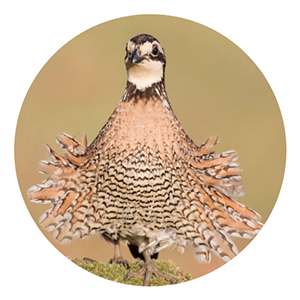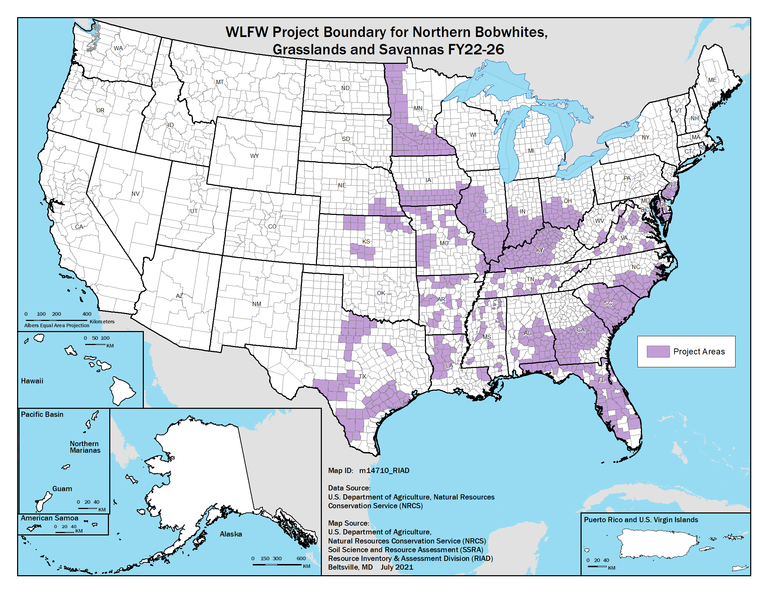Grasslands and Savannas
The grassland and savanna regions of the U.S. include the number one crop production states for corn, wheat, sorghum, soybeans, peanuts and cotton. Six of the top ten forest production states are in the East, and the Fescue Belt has the highest concentration of livestock producers and livestock in the country. Southeastern grasslands are the most diverse biologically in the U.S. but also the most imperiled with up to 90% in degraded condition or lost. Major threats include: habitat loss and fragmentation; climate change; alterations to natural land disturbance regimes; and invasive species.
Working Lands for WildlifeNorthern Bobwhite, Grasslands and Savannas
A Framework for Conservation Action
Download PDF
WLFW Conservation Tools

NEW MOBILE APP!
A Mobile App to track Northern Bobwhite on Our Landscapes
The app is a citizen science tool that can be used by the public to contribute to our knowledge of the distribution and abundance of Northern Bobwhite

NEW WEB APP!
BirdLocale: WLFW Landscape Restoration Bird Assessment
The project will help in evaluating the effects of land-cover management practices (e.g., prescribed fire, forage planting, and brush management) on certain grassland songbird populations in the Eastern USA.
SE FireMap Version 1.0 (Beta)
Web Map Viewer
Explore the data online!
This product maps all detectable fires, including managed prescribed burns and wildfires, across nine states in the southeastern United States.



























